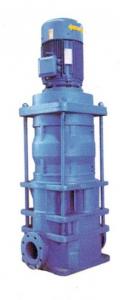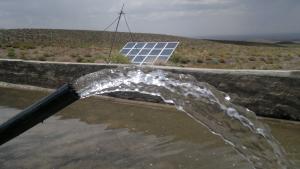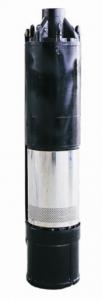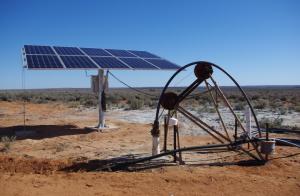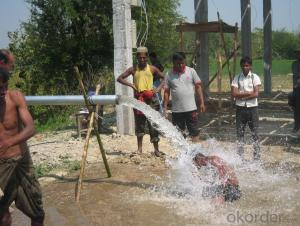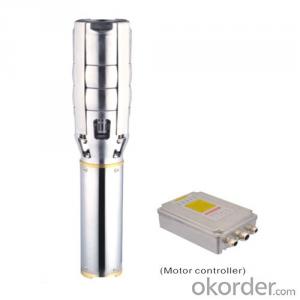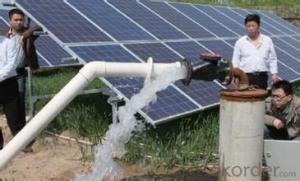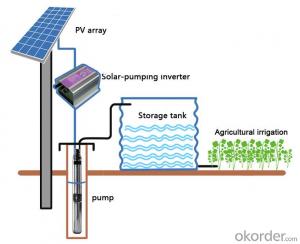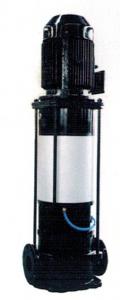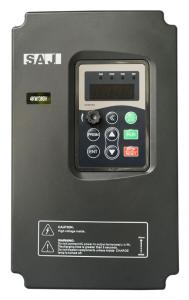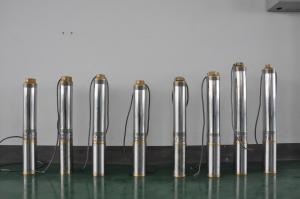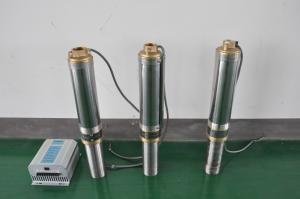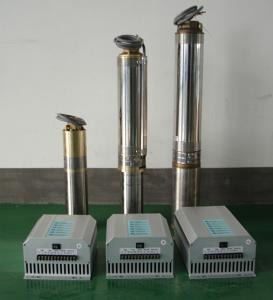Pumplus Solar Pump L3D-24-300 Solar Water Pump
- Loading Port:
- China Main Port
- Payment Terms:
- TT OR LC
- Min Order Qty:
- -
- Supply Capability:
- 300 sets set/month
OKorder Service Pledge
OKorder Financial Service
You Might Also Like
Product description:
Product: Solar water pump
Model:L3D-24-300
Appilication:
surface pump
for surface water of pond, river, lake
for irrigation of a big farm with 15000 m2 on the top of a high mountain
Product specification:
flow rate:24m3/ hour, 300m3/day.
lift: 10m-300m
pump diameter: 610mm
Pump installed on the ground, outlet to the water surface:4m
with AC motor, motor power:22kW
but only need solar power:24kW(while Grundfos pump needs at least 45kW solar power, our pump can save more than 50% solar panel power,save USD15000 cost for solar panel per set.
Material:
Pump inside: stainless steel and wearable nylon,it enables our solar pump to have 10 years sevice life.
Motor : AC motor, 380V , three phase , 50Hz. The pump also can connect with grid power directly.
Certification:
3 International patent
ISO9001
CE
Warranty:2 years
- Q: Are there any limitations to the suction lift capability of a solar pump?
- The suction lift capability of a solar pump is not without its limitations. One major constraint lies in the maximum height the pump can achieve when lifting water. Solar pumps typically have a predefined maximum suction lift height, which refers to the vertical distance between the water source and the pump. Should this height surpass the pump's capacity, it will struggle to lift the water effectively. Another limitation arises from the pump's efficiency. As solar pumps rely on solar energy to operate, the efficiency of converting solar energy into pumping power can vary. If the pump possesses low efficiency, it may face difficulties in achieving the desired suction lift capability. Additionally, the suction lift capability can be influenced by the pump's capacity and the size of the solar panels. If the pump is undersized or the solar panels fail to generate sufficient power, it can result in limitations to the suction lift capability. Moreover, the performance of the pump can be impacted by the type and condition of the suction pipe. If the pipe is too narrow or experiences leaks, it can diminish the pump's suction lift capability. Considering these limitations is crucial in selecting a suitable solar pump for specific suction lift requirements. Seeking guidance from a professional or consulting the manufacturer can aid in determining the appropriate pump for individual needs.
- Q: Can a solar pump be used for fire fighting purposes?
- Yes, a solar pump can be used for fire fighting purposes. Solar pumps are capable of providing a reliable and continuous water supply, making them a suitable option for firefighting operations in areas where there is ample sunlight. The use of solar pumps can help reduce reliance on traditional power sources and provide a more sustainable and cost-effective solution for firefighting needs.
- Q: Can a solar pump be used for water extraction from wells or boreholes?
- Yes, a solar pump can definitely be used for water extraction from wells or boreholes. Solar-powered pumps are specifically designed to utilize energy from the sun to power the pump, which allows for efficient and sustainable water extraction from underground sources such as wells or boreholes.
- Q: Can a solar pump be used for water supply in national parks or wildlife reserves?
- Yes, a solar pump can be used for water supply in national parks or wildlife reserves. Solar pumps are an environmentally friendly and sustainable option that can provide a reliable and efficient water supply without relying on electricity grids or fuel-powered generators. They can help maintain water sources for animals, vegetation, and visitors while reducing the carbon footprint and minimizing disruption to the natural ecosystem.
- Q: Can a solar pump be used for irrigation in agricultural fields?
- Yes, a solar pump can definitely be used for irrigation in agricultural fields. Solar pumps are an efficient and sustainable solution for pumping water, utilizing solar energy to power the pump. They can effectively provide water for irrigation purposes, helping to enhance crop growth and ensure proper irrigation in agricultural fields. Additionally, solar pumps offer cost savings by eliminating the need for traditional fuel or electricity to power the pump, making them a practical choice for farmers.
- Q: Can a solar pump be used in areas prone to flooding?
- Yes, a solar pump can be used in areas prone to flooding. Solar pumps are designed to be weather-resistant and can continue to operate even during heavy rain or flooding. Additionally, since they run on solar power, they do not rely on electricity grids, making them suitable for areas with unreliable or disrupted power supply due to flooding or other natural disasters.
- Q: Can a solar pump be used in reverse osmosis systems?
- Yes, a solar pump can be used in reverse osmosis systems. Reverse osmosis is a water treatment process that utilizes a semi-permeable membrane to remove impurities from water. In order for this process to occur, pressure needs to be applied to overcome the natural osmotic pressure. Traditionally, this pressure is provided by an electric pump. However, a solar pump can also be used to generate the necessary pressure for reverse osmosis. Solar pumps utilize solar energy to power the pump, which in turn creates the required pressure for the process. This makes it a more sustainable and environmentally friendly option, as it reduces reliance on electricity and fossil fuels. Solar pumps are commonly used in remote areas where electricity is not readily available or expensive to access. They are also ideal for off-grid applications, such as desalination plants, where reverse osmosis systems are used to convert seawater into potable water. By harnessing the power of the sun, solar pumps offer a cost-effective and sustainable solution for reverse osmosis systems.
- Q: How does a solar pump handle water with high levels of arsenic or other toxins?
- A solar pump alone cannot directly handle water with high levels of arsenic or other toxins. However, there are additional treatment methods that can be combined with a solar pump system to address water contaminated with arsenic or other toxins. These treatment methods may include technologies like activated carbon filters, reverse osmosis, or other specialized filtration systems. These additional treatment steps can effectively remove or reduce the levels of toxins, ensuring safe and clean water for various purposes.
- Q: How long does it take to recharge the batteries in a solar pump system?
- The time it takes to recharge the batteries in a solar pump system depends on various factors such as the size and capacity of the batteries, the amount of sunlight available, and the efficiency of the solar panels. Typically, it can take anywhere from a few hours to a full day to fully recharge the batteries in a solar pump system.
- Q: What is the expected noise level of a solar pump during operation?
- The noise level of a solar pump can differ based on multiple factors, including the pump's type, model, system size, and installation conditions. Nevertheless, solar pumps are generally recognized for their quiet performance. In contrast to conventional fuel-powered or electric pumps, solar pumps generate minimal noise, and some even operate silently. This is because solar pumps do not have internal combustion engines or noisy mechanical parts; instead, they rely on solar energy to function. Consequently, the anticipated noise level of a solar pump during operation is typically extremely low, resulting in a more serene and tranquil setting.
Send your message to us
Pumplus Solar Pump L3D-24-300 Solar Water Pump
- Loading Port:
- China Main Port
- Payment Terms:
- TT OR LC
- Min Order Qty:
- -
- Supply Capability:
- 300 sets set/month
OKorder Service Pledge
OKorder Financial Service
Similar products
Hot products
Hot Searches
Related keywords
